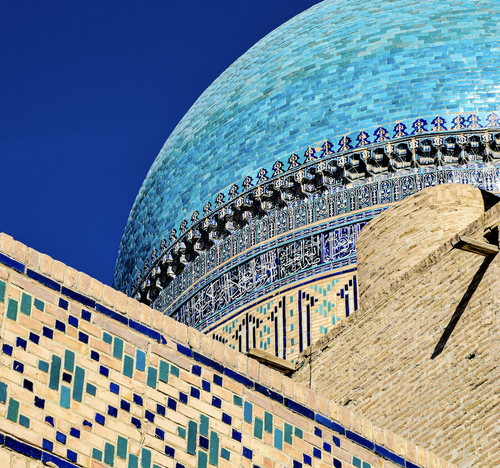What’s the Difference between Ceramic and Porcelain tile?
Folks who are considering upgrading to a custom kitchen may find themselves poring over home improvement magazines in search of the perfect tile. With all the options available out there, it may be difficult to choose the right size, style, and color. Then, on top of those options, you'll also have to decipher between ceramic and porcelain tile.
At first glance, ceramic and porcelain tiles may seem the same, but their differences lie in how they’re made. Both are crafted from clay mixtures and fired in kilns, but porcelain uses refined clay and higher firing temperatures, resulting in a denser and more durable product.
Porcelain is considered a specialized type of ceramic with a stronger composition. Choosing between the two depends on factors such as cost and water resistance. So, let's go over how both types of tile are made and where they would work best in someone's home. Understanding these factors should help you decide what type of tile works best for your needs.

How Are Ceramic Tiles Made?
The art of making ceramic tiles is ancient, with origins that date back over nine thousand years to early Middle Eastern civilizations. Today’s ceramic tiles are made using similar methods, though the process has become more advanced. Modern ceramic tiles are made by molding clay into shapes, dyeing them to the desired color, and firing them in kilns at high temperatures ranging from 1832°F to 2282°F (1000°C to 1250°C).
Because ceramic tiles are fired at lower temperatures than porcelain, they are softer, less dense, and more porous. This makes them absorb more water, so unfinished ceramic tiles may not be an ideal choice for areas that are regularly exposed to moisture. However, their affordability and versatility make them popular for many spaces. Both ceramic and porcelain tiles can be glazed, which gives them a smooth, water-resistant surface. This might make you think that ceramic tile is just as waterproof as porcelain, but the potential proble arises with the grout. If water seeps through the grout lines and reaches the base of the tile, it can cause damage, especially since ceramic tiles are more porous than porcelain.How Are Porcelain Tiles Made?

Porcelain tiles were first developed in China around two thousand years ago as the result of advancements in tile-making processes. These tiles are made with fine-grained clay that is packed tightly, creating a denser and more durable structure with minimal gaps.
Porcelain tiles are fired at much higher temperatures than ceramic tiles, ranging from 2381°F to 3272°F (1305°C to 1800°C). This intense process makes porcelain exceptionally durable and gives it a water absorption rate of less than 0.5 percent. By comparison, ceramic tiles typically have a water absorption rate of 3 to 10 percent, making porcelain a more reliable choice for areas exposed to moisture, like bathrooms, kitchens, and outdoor patios.
Porcelain tiles can be left in their natural state or crafted to resemble stone, wood, or concrete using advanced manufacturing techniques.
Due to the more refined materials and complex manufacturing process, porcelain tiles are generally more expensive than ceramic tiles. However, the durability and versatility they offer often outweigh the higher upfront cost.
Why Choose Ceramic?

Since ceramic is less durable, it is best used in areas where heavy traffic or moisture is not a concern. These tiles might be a good choice for bathroom walls, outdoor areas, or the space surrounding your fireplace. While ceramic can work in some places that get wet, porcelain may be a better choice in those situations.
Ceramic tiles may also be a good option for kitchen backsplashes because they’re lightweight and easy to install. Using mastic, an adhesive suited for low-moisture areas, a ceramic backsplash can be applied directly to drywall to protect it from cooking splatters and dents.
Why Choose Porcelain?

Porcelain tiles are the stronger and more durable option, making them ideal for areas with heavy foot traffic or frequent exposure to moisture. Their dense structure makes them resistant to stains, water, and wear, which simplifies upkeep and maintenance.
Porcelain tiles are especially well-suited for spaces like kitchen floors and counters. They also work well in bathrooms, entryways, patios, and areas near swimming pools and hot tubs. While porcelain tiles cost more initially, their long-lasting durability and resistance to damage can save money over time by reducing the need for replacements. For spaces that demand strength and style, porcelain is a reliable choice.
What tile works best for you?
In the end, the choice between ceramic and porcelain tiles depends on your priorities, whether it’s cost, durability, or water resistance. Ceramic tiles are a good fit for decorative, low-moisture spaces, while porcelain is better suited for high-traffic or wet areas. One of the best things you can do is ask your contractor for advice and explore different options to find what suits your style and needs.
Author:
Aaron Randolph
